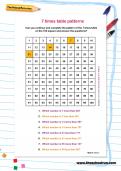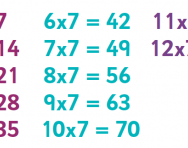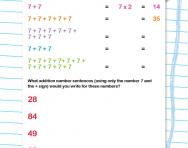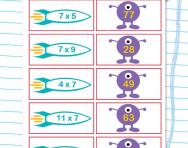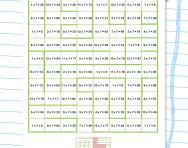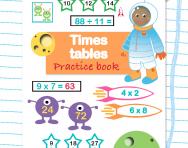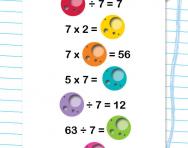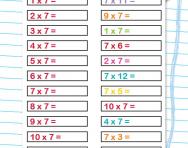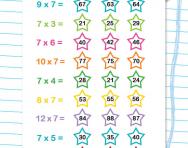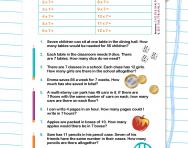7 times table patterns
What is the 7 times table?
The 7 times table is a multiplication table where each number is multiplied by 7.
It goes like this:
1 x 7 = 7
2 x 7 = 14
3 x 7 = 21
4 x 7 = 28
5 x 7 = 35
6 x 7 = 42
7 x 7 = 49
8 x 7 = 56
9 x 7 = 63
10 x 7 = 70
And so on.
Is there a pattern to the 7 times table?
In the 7 times table, you'll find a few interesting patterns that can help your child understand and remember multiplication more easily:
Increasing by 7
Each time you move to the next number in the table, you're simply adding 7 to the previous one.
Digit patterns
If you look closely at the units digits of the multiples, they follow a predictable cycle. It goes like this: 7, 4, 1, 8, 5, 2, 9, 6, 3, 0, and then it repeats. For example, in 7, 14, 21, 28, 35, 42, 49, 56, 63, 70, the units digits are 7, 4, 1, 8, 5, 2, 9, 6, 3, 0, respectively.
Alternating odd and even
If you pay attention to the units digits, you'll notice they switch between odd and even numbers as you go through the table.
Related to other tables
There are some neat connections between the 7 times table and other multiplication tables. For instance, multiplying any number by 7 is equivalent to doubling that number and then adding the original number. So, 7 times 6 is like doubling 6 (which is 12) and then adding 6, which equals 18.
These patterns can make learning multiplication facts more engaging and easier to grasp!
How will this 7 times table patterns worksheet help your child?
This worksheet was created by an experienced educator with the aim of challenging your child in a way that helps embed the 7 times tables, not just by memory, but by understanding the way the multiplication table works. It does this with a visual table that your child will need to complete, and questions that will require your child to think a little deeper about numbers and the way they work.
For more help with times tables, see our hub page, or try a new challenge such as our 7 times table quick quiz.
